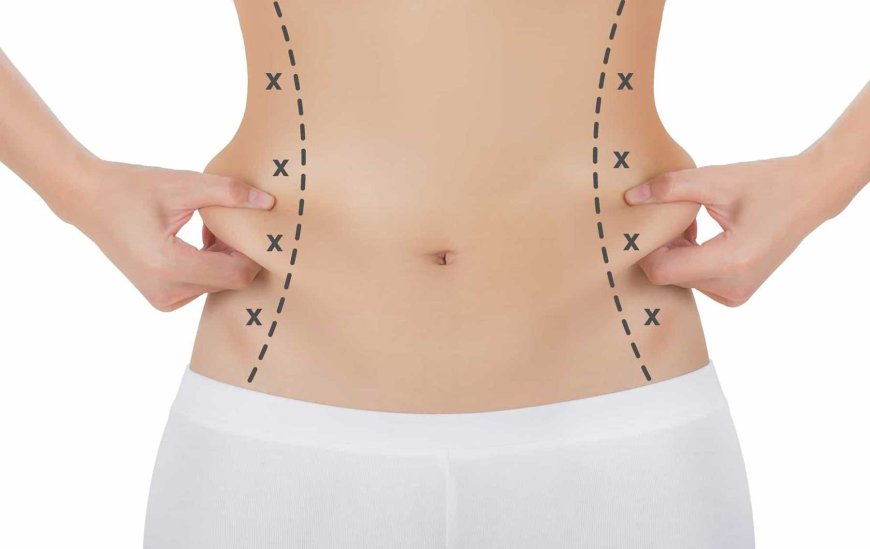Top Considerations for Liposuction Surgery in UAE

Liposuction has become one of the most popular cosmetic procedures globally, and the UAE is no exception. With its advanced healthcare facilities and skilled practitioners, many individuals are considering this procedure to achieve their desired body contours. However, before embarking on this journey, several critical factors should be taken into account to ensure safety, satisfaction, and optimal results.
Understanding Liposuction
Liposuction is a surgical procedure designed to remove excess fat from specific areas of the body, such as the abdomen, thighs, buttocks, arms, and neck. It’s important to understand that liposuction is not a weight-loss solution but rather a body contouring procedure aimed at enhancing your overall shape. The ideal candidates for liposuction are those who are close to their ideal weight but have stubborn fat deposits that resist diet and exercise.
Choosing a Qualified Surgeon
One of the most crucial steps in the Liposuction Surgery in UAE journey is selecting a qualified and experienced surgeon. In the UAE, many board-certified plastic surgeons specialize in body contouring procedures. When researching potential surgeons, consider the following:
- Credentials: Verify the surgeon’s board certification and experience in performing liposuction. Look for reviews and before-and-after photos of previous patients.
- Consultation: Schedule consultations with multiple surgeons to discuss your goals, ask questions, and evaluate their approach to the procedure.
- Facility Standards: Ensure that the surgery will be performed in an accredited facility equipped with the latest technology and safety standards.
Types of Liposuction Techniques
Understanding the different types of liposuction techniques available can help you make an informed decision about which method suits your needs best. Common techniques include:
- Tumescent Liposuction: Involves injecting a solution into the target area to numb it and minimize bleeding. This technique is commonly used and well-tolerated by patients.
- Ultrasound-Assisted Liposuction (UAL): Utilizes ultrasound energy to break down fat cells, making them easier to remove. This method is particularly effective for areas with denser fat.
- Laser-Assisted Liposuction: Involves using laser energy to liquefy fat, allowing for easier removal and potentially faster recovery.
- Power-Assisted Liposuction (PAL): Uses a mechanized device to help move the cannula, making fat removal quicker and less physically demanding for the surgeon.
Discuss the pros and cons of each technique with your surgeon to determine the best option for you.
Setting Realistic Expectations
Liposuction can lead to significant improvements in body contours, but it is essential to set realistic expectations. Here are some points to consider:
- Not a Weight-Loss Solution: Liposuction is not meant for weight loss; candidates should be at or near their ideal weight.
- Recovery Time: Understand the recovery process and timelines. Most patients can return to light activities within a week, but full recovery may take several weeks.
- Results: While results can be dramatic, they may take time to fully appear as swelling subsides. It can take several months to see the final results.
Pre-Operative Preparation
Preparing for liposuction is vital for a smooth procedure and recovery. Here are some essential pre-operative steps:
- Medical History: Provide your surgeon with a comprehensive medical history, including any medications you are currently taking. Certain medications, such as blood thinners, may need to be paused before surgery.
- Lifestyle Changes: Adopt a healthy lifestyle leading up to the procedure. This includes maintaining a balanced diet and avoiding smoking and alcohol, as these can hinder the healing process.
- Post-Operative Care: Plan for post-operative care. Arrange for someone to assist you after the surgery, as you may experience discomfort and limited mobility.
Understanding Risks and Complications
Like any surgical procedure, liposuction carries certain risks. Be sure to discuss these with your surgeon, which may include:
- Infection: While rare, infections can occur at the incision sites.
- Scarring: Though incisions are typically small, some scarring is inevitable. The surgeon’s skill can influence the visibility of scars.
- Fluid Accumulation: Sometimes, pockets of fluid can accumulate under the skin, requiring drainage.
- Uneven Results: In some cases, results may not be symmetrical, leading to contour irregularities.
Understanding these risks can help you make a more informed decision about whether to proceed with the surgery.
Post-Operative Care and Recovery
The post-operative phase is crucial for achieving the best results. Here are key aspects of recovery:
- Follow-Up Appointments: Attend all scheduled follow-ups with your surgeon to monitor your healing progress.
- Compression Garments: Wearing compression garments as instructed can help reduce swelling and support the healing process.
- Physical Activity: While light activities may be encouraged soon after surgery, avoid strenuous exercise until cleared by your surgeon.
Conclusion
Liposuction can be a transformative procedure for individuals seeking to enhance their body contours. However, careful consideration and thorough research are essential to ensure a successful outcome. By selecting a qualified surgeon, understanding the procedure, and preparing adequately for surgery and recovery, you can significantly increase your chances of achieving the desired results. Always prioritize your health and safety throughout the process, and remember that the journey to your ideal body is a partnership between you and your healthcare provider.
